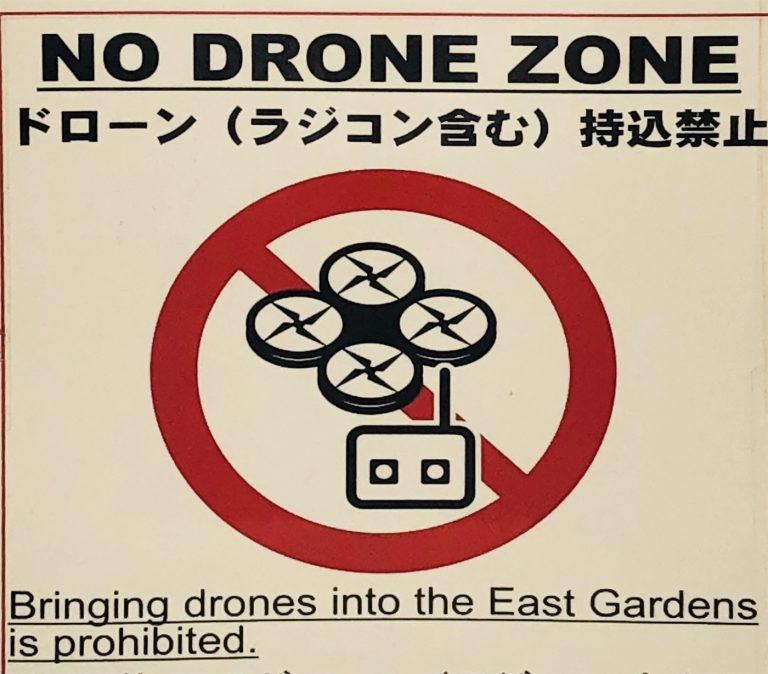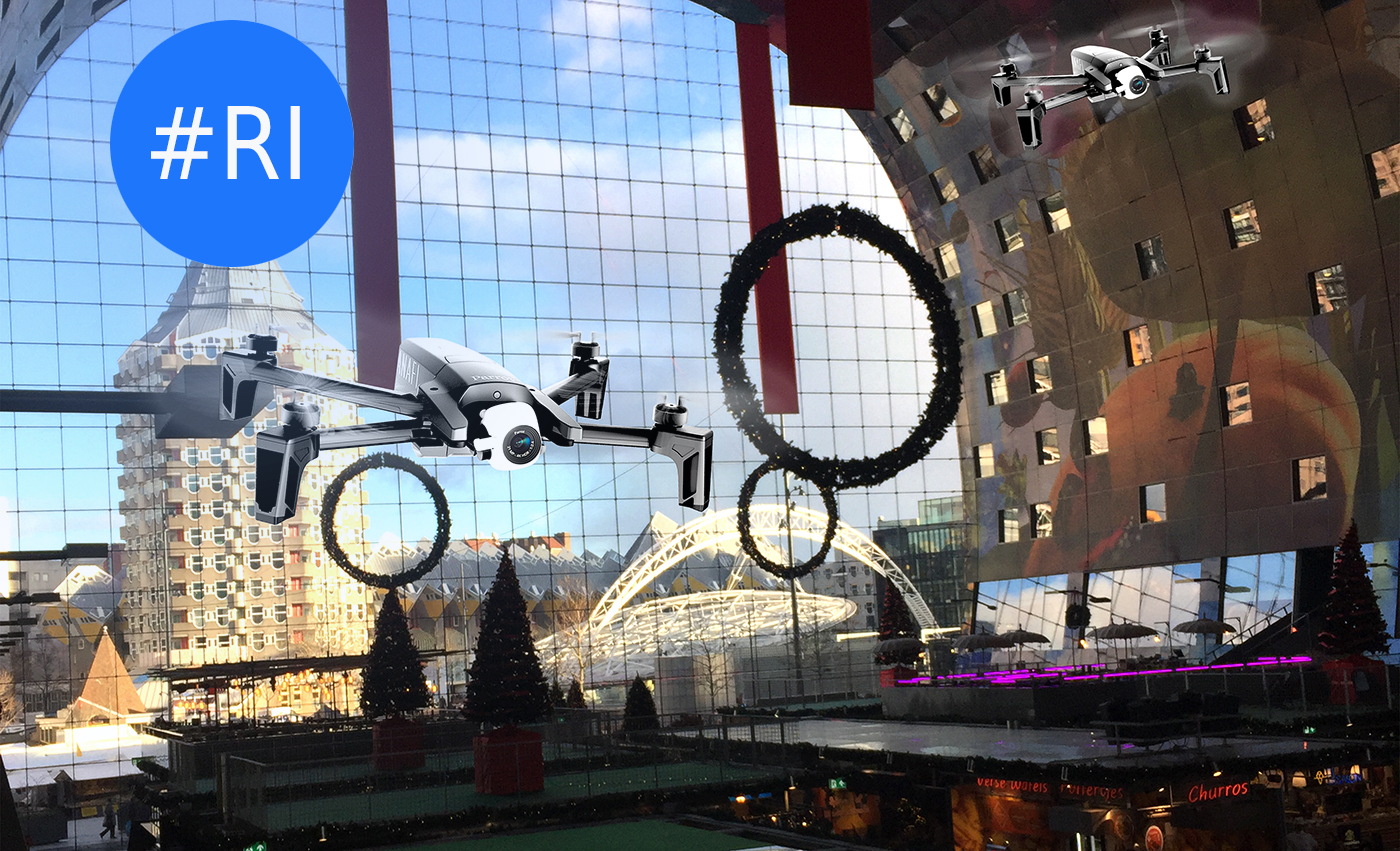During their minor in Responsible Innovation, students considered how drones could be deployed in shopping malls to monitor the structure and to protect shoppers.
Successful companies innovate and innovation can bring a lot of good to society, but it may harm as well. The challenge is to innovate in a responsible way: beneficial both to business and society. Last semester, students followed the minor Responsible Innovation and studied the ethics in the innovation process. Part of their assignment was to write an article for a general audience. This is part 4 from 4.
In December 2018, supposed drone activity in the vicinity of London Gatwick Airport led to severe travel disruption that affected 140,000 passengers and more than 1,000 flights. Given the level of disruption, this incident blemished the general public’s perception of drones. However, drones could serve a number of beneficial and positive roles in modern society.
Drones operating in or near urban areas may become a regular sight within the next year given that the European Aviation Safety Agency (EASA) wishes to enforce a common European airspace (U-space) and commence safe drone delivery by the second quarter of 2019. The skies could change. However, in general, public opinion towards drone technology is negative. This might be associated with events such as the Gatwick Drone incident and the portrayal of drones in popular culture. For instance, the South Park episode of ‘The Magic Bush’ argues that drones should be avoided, while the narrative of the Black Mirror episode ‘Hated in the Nation’ is based on a rogue drone that tries to kill people. These could serve to incite technology concerns among the general public. In the real world, media outlets can also misrepresent the abilities and functions of drone technology through inaccurate or vague reporting.
‘Shopping malls could benefit from drone structure inspection’
Despite the negative representation of drones in the media, drone technology can be used for the benefit of society and the environment. For instance, drones are actively used to inspect civil structures. Structures such as bridges, telephone masts, power lines, and wind turbines can be inspected by drones in an effective, cost-efficient, and safe manner without the need for large cranes or platforms and/or workers to scale cranes to visually inspect the structure. Instead, the drone operator can examine the drone footage from the safety of a control room.
Up to now, civil structures close to large crowds of people are seldom inspected by drones. One type of public civil structure that is routinely visited by large crowds of people is a shopping mall. In recent history, structural failures in shopping malls have led to building collapse and the loss of human lives. In 1995, a poorly designed and maintained shopping mall in South Korea collapsed, resulting in 502 deaths and more than 1,500 people injured. In the summer of 2018, a large shopping mall in Mexico also collapsed. Fortunately, no casualties were reported. In the Netherlands alone, there are 528 shopping malls that could benefit from drone structure inspection. One of the most iconic shopping areas is the Markthal in Rotterdam.
 Banned for drones. (Sign from Japan)
Banned for drones. (Sign from Japan)In the near future, drones could have a major impact on shopping mall design and maintenance. Besides structural surveillance of malls, drones could be used for a number of other functions. First, drones could play a role in crowd surveillance, in particular to monitor theft or other petty crimes. While CCTV cameras are commonplace in many stores in malls, aerial drones would provide a broader and more detailed view.
Second, drones could be used in conjunction with existing evacuation and first aid protocols. While UAV’s (drones) on their own are not sufficiently equipped to prevent emergency situations, they could assist in crowd evacuation and help emergency medical technicians (EMTs) and fire crews, who are normally the first on-site in an emergency situation. Drones could quickly identify and locate dangers in a mall before crews enter the building. However, issues of overtrust with drones in such situations may also arise. For example, in a paper published in the proceedings of the 2016 conference on Human-Robot Interaction (HRI), Paul Robinette and colleagues at Georgia Tech highlighted overtrust issues with robots in emergency evacuation situations.
Crowd control
Third, drones could be used to maintain and regulate crowd control in malls. The surveillance data could reveal how people move in crowds, which can in turn influence emergency protocols. In addition, data could help in the redesign of existing shopping mall spaces.
Finally, drones could be used for marketing. Naturally, the stores in the mall want to entice customers into their stores and a marketing strategy is a common tool used to achieve this goal. As drones fly above the customers they could carry advertising screens or banners . In addition, drones could act as interactive guides, a videography tool for commercials, and emit sounds or odours into the mall to augment the experience of visitors.
Although drones could certainly play a role in the malls of the future, there are a number of concerns such as citizen privacy, the use of the collected data, and the potentially invasive nature of drones in shopping malls. The 2018 report Drones in the Service of Society by the Foundation for Responsible Robotics noted that there is considerable support for the deployment of drones for the benefit of society such as for humanitarian aid or emergency services. Therefore, our proposal that drones could play a similar role in shopping malls aligns with public sentiment on drones. While mall drones would also collect data to improve and adjust evacuation and emergency protocols, the same data could be used by stores for marketing purposes. However, a 2012 public survey in the United States indicated that 52% of respondents were opposed to police drone surveillance. It could be envisaged that many of these respondents would also resist similar surveillance in a shopping mall.
Drones could have a hugely positive impact on societal well-being in civil structures such as shopping malls. But before drones are used in shopping malls, it is imperative to properly assess public opinion on their use in malls, alleviate concerns through responsible and transparent communication, and consult all relevant stakeholders.
- About this project
Jaap, Sanne, Berend, Otis, and Marie-Zoé are part of a Student Project Group (SPG) following a minor in Responsible Innovation, which is facilitated through a collaboration of the universities of Leiden, Delft and Rotterdam. Each university contributes a specific focus in the field of Responsible Innovation. The students follow courses and complete projects on responsible innovation, responsible management and ethics over two study blocks.
- About the mentor
Barry W. Fitzgerald is a research scientist based at the Process & Energy Department of 3mE, TU Delft. His main research interests include biomass processing, polymer physics, responsible innovation, and science education. He is also actively involved in scientific communication outreach and has published the popular science books Secrets of Superhero Science and Secret Science of Santa Claus. In addition, Barry is the editor-in-chief of the TU Delft hosted open access journal Superhero Science and Technology.
Barry Fitzgerald / lecturer



Comments are closed.